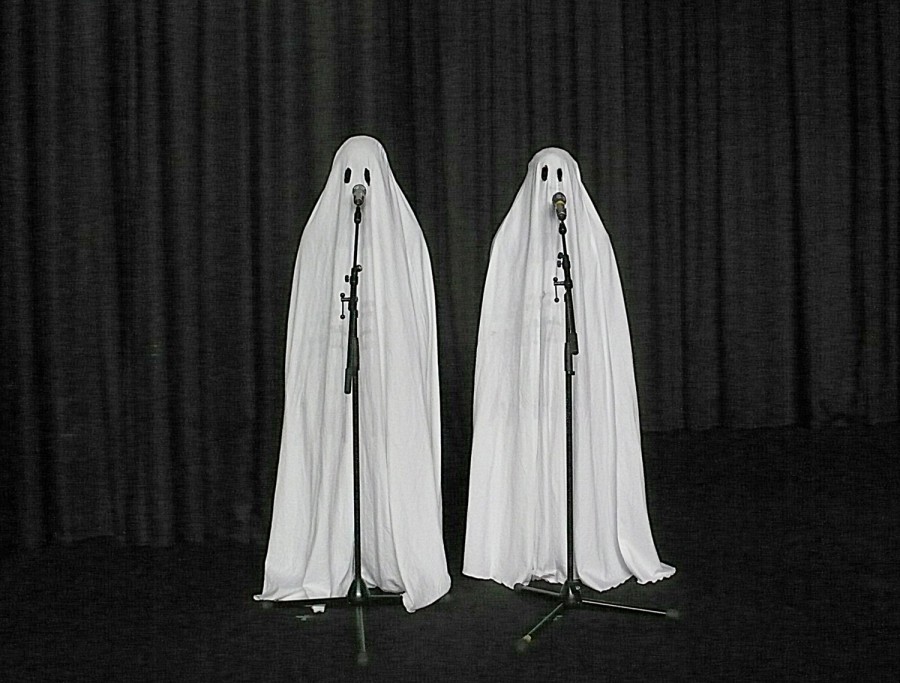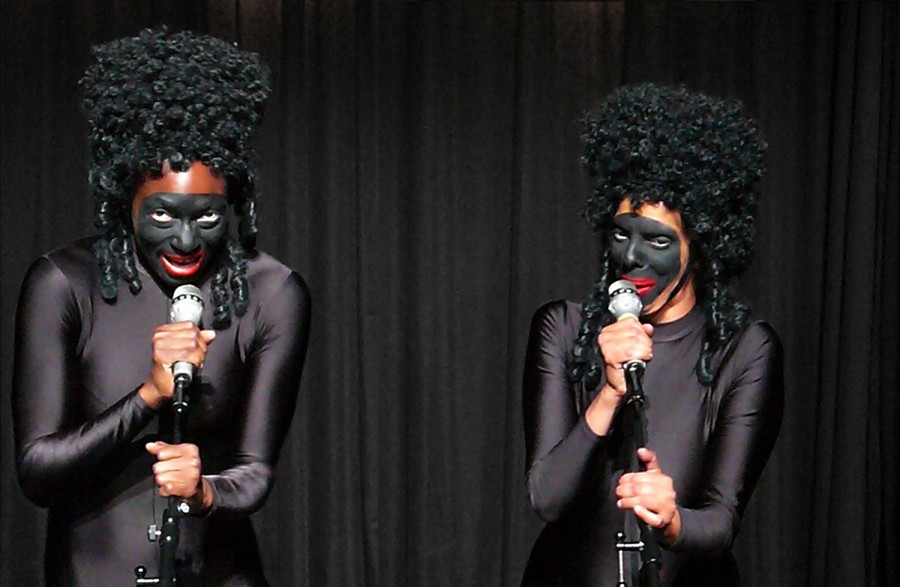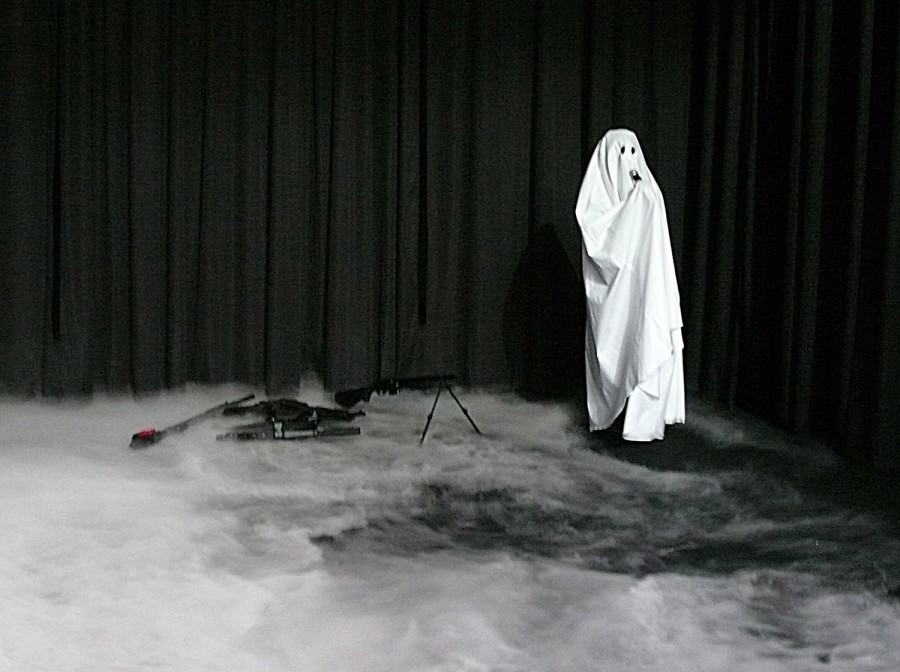LOREDREAMSONG
(2010)After her revelatory Self portrait camouflage—a solo filled with a symphony of voices, faces, images of bodies left behind—Latifa Laâbissi continues her exploration of the representation of minorities, this time in the form of a duo. But to keep us guessing, tuning each movement to be in sync with the appropriate social, historical and political contexts, Latifa Laâbissi and Sophiatou Kossoko have chosen a series of equivocal figures—flickering camouflage, a projection screen diffracting the images, intensifying them and revealing what has been held back. Manipulating the explosive material of an imaginary policy targeting otherness in more and more radical ways, these two poltergeists create a montage of enraged physical states, hijacked cultural fragments, bits of dialogue or melody, all of it swept up in a stream of alternative fictions. They play off the familiar, disturbing silhouette of ghosts, veiled, anonymous shapes, vehicles for hallucinating and hearing "voices"—discordant inflections, rebel yells, jokes that are slightly "off." What does a ghost do? He or she haunts: spaces, minds, histories, drifting between the visible and the invisible by unraveling their boundaries, transforming the silence into whispers. In the course of their wanderings, these two walking megaphones create interference between speeches and disseminate their "little music." Like humming a refrain without remembering the words to the song, an obsessive jingle, Loredreamsong is an invitation to discover unexpected associations, trompe-l’oeil identities, double meanings: a clever trap to capture the image of someone who always manages to slip away. Behind the twisting of codes lies the utopic horizon of "lore," an ensemble of nomadic signs, open to blending and subversion, folklore without the folk, without ethnic or social ties, a "matrix of knowledge, stories and practices which is really about movement, circulation’ (after Jacques Rancière)."
Gilles Amalvi




